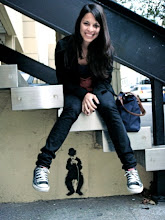.JPG.jpeg)
The images and colors chosen were a delight to watch. It was very colorful, showing Indian culture in all its splendor. The director played a lot with the balance of the images in the screen. For instance, there were many extreme close-ups of the truck, which were on the far right of the screen. The empty space of these shots were filled with the moving road.
There was a dominance of blues, aquamarines, greens, and oranges. In addition, they used a lot of close-ups with telephoto lens, which made objects that were not the central image very blurry, creating colorful and abstract backgrounds. Such images were able to awake the senses, making the audience smell and feel what they were watching.
The editing technique used seemed to follow the melody of each song. They cut from extreme close-ups to medium, wide, and landscape shots with the flow of the music. The extremely important role that the music played in the movie was expected given the fact that it was an Indian film. However, such dominance and importance was made in a very elegant manner. For instance, there is a scene in which the main female character starts dancing and singing. You can hear her singing traditional songs a capella of, which gave me goose bumps. Extremes close-ups of her smiling while dancing accompanied this music. Moreover, I was wondering if they would include some Bollywood in the film, which they did so in a very smart and funny way. The movies that their truck projected showed such old Bollywood movies.
The only part of the movie that I did not like, was a section in the story line lost its track. The main character rescues his crew from a group of bandits by giving them oil for the hair. It seamed extremely fake and composed, like a caricatures with western music on the background. However, apart from this scene, I enjoyed the film’s touch with reality. It provided first hand contrasts of the social classes in India by paralleling groups of people who walk for days in search of water with the wealthy kids that have ipods, Raybands, and Levi’s jeans. As one of the characters explained, even if they live in the same country, they are “from two very different worlds.”
I loved the fact that after the movie was over, most people stayed and watched the entire list of credits, commenting about names they recognized. It is always shocking to realize the incredible amount of people that work behind the scenes. For instance, they had at least seven carpenters, twelve truck drivers, five music supervisors, and so on.

No comments:
Post a Comment